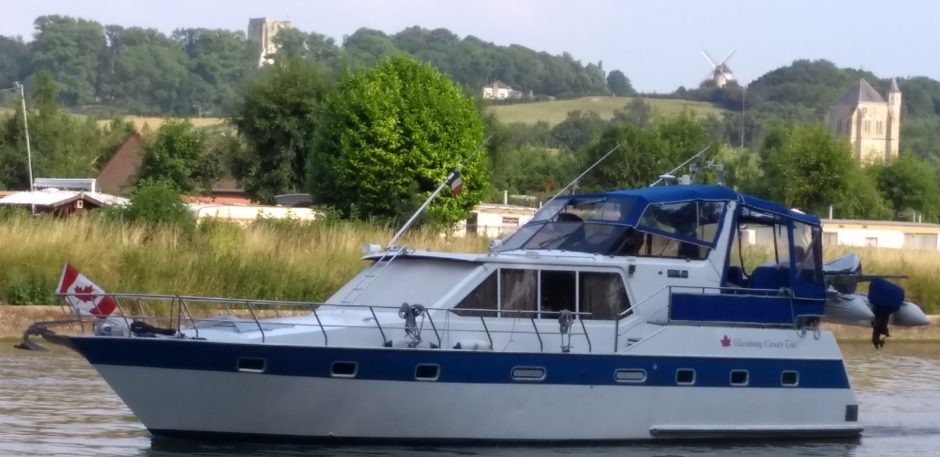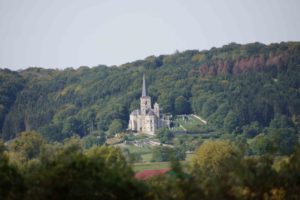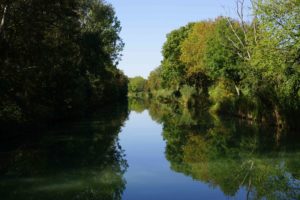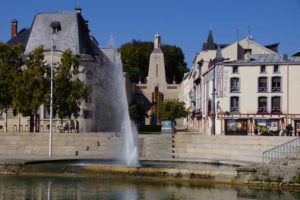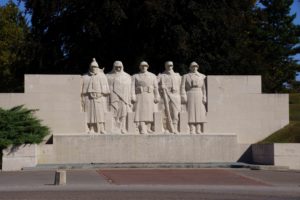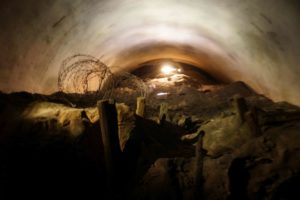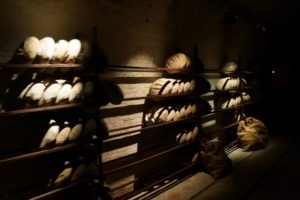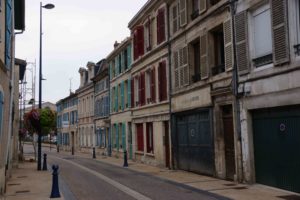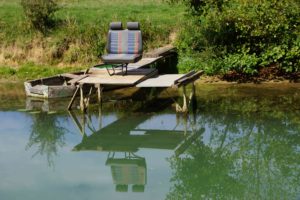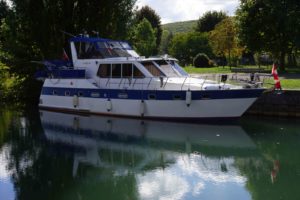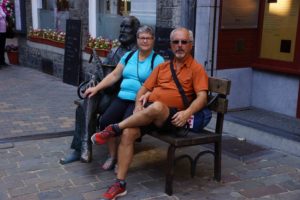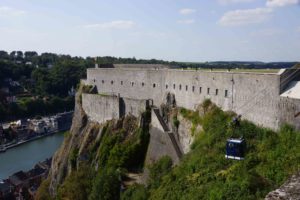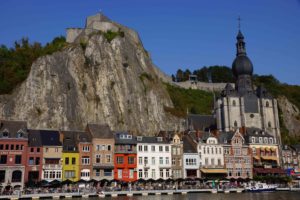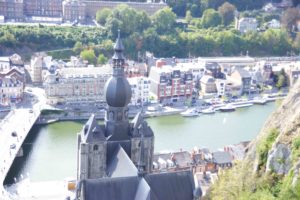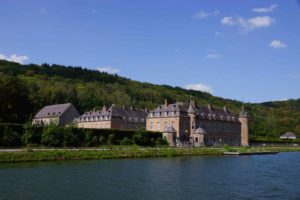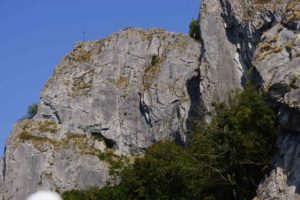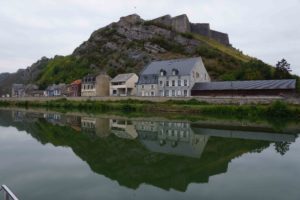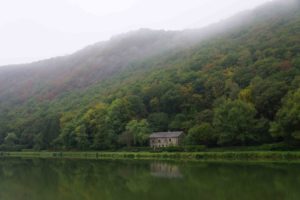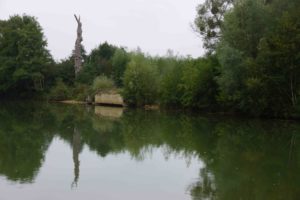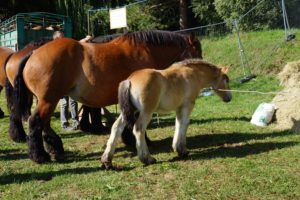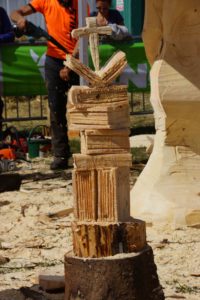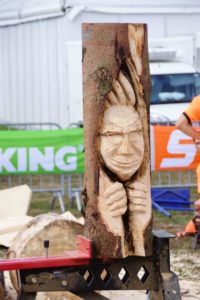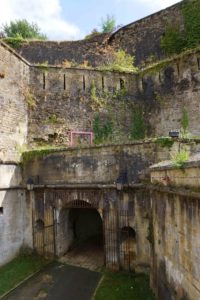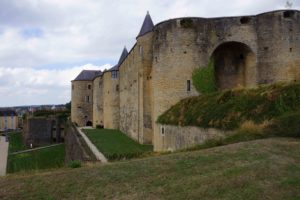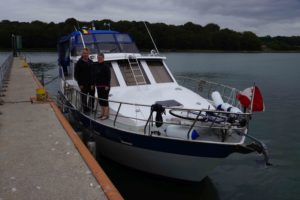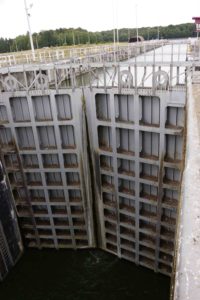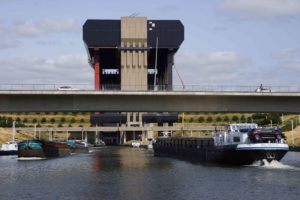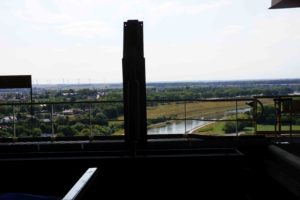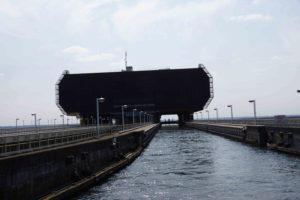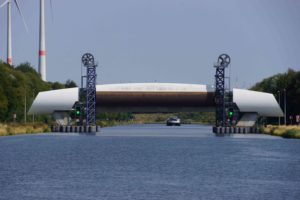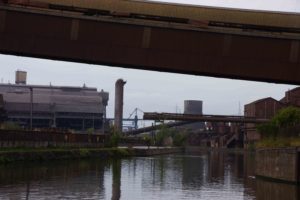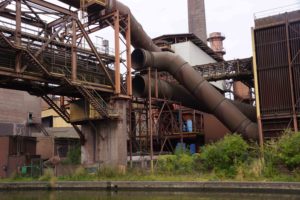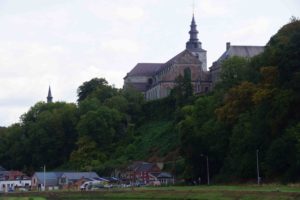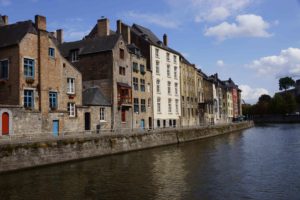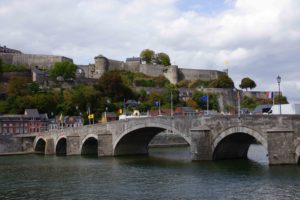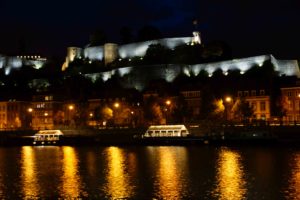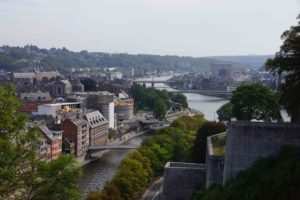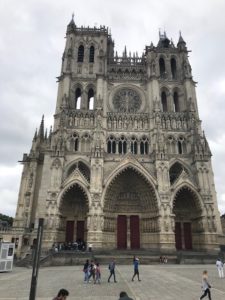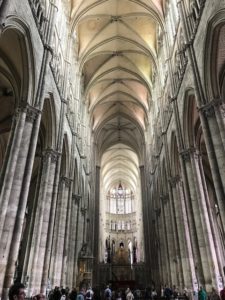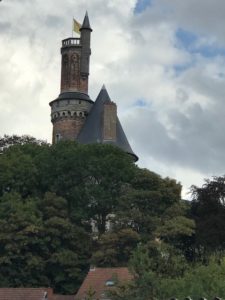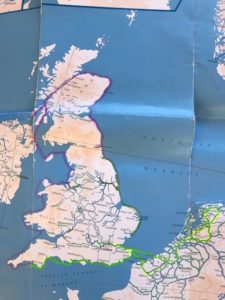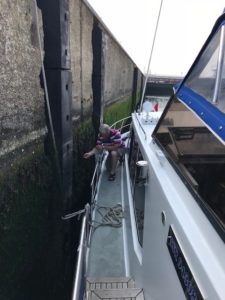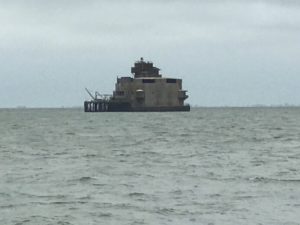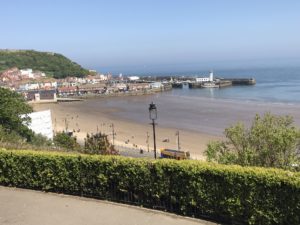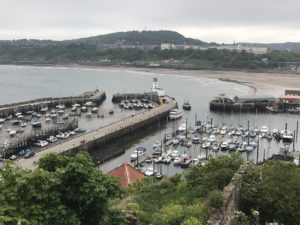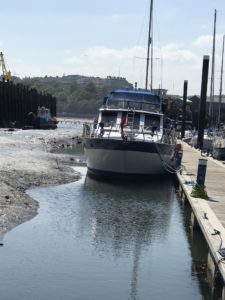Verdun
We travelled further upstream on the Meuse, with many of the river meanders cut-off by canalized sections. The river flow is very slow at this time, so going upstream is not an issue. The river valley alternates between high banks and wide flood plains, intensely farmed, but often with hay or grazing along the river, to prevent serious erosion in the (reportedly) frequent winter and spring floods. That remains the single biggest obstacle to wintering anywhere except at Pont-a-Bar, where I will be.
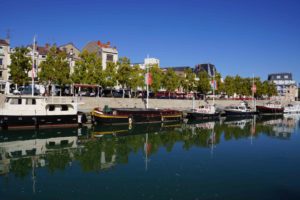
Verdun waterfront, with the queue of boats awaiting the reopening of the canal south. I think it will be a long wait…
The moorings at Verdun do have pontoons that look like the tidal ones: huge pylons to allow the pontoons to float in high water, but they would be very uncomfortable moorings in high water, and very public as well. So, I am heading back downstream, past Sedan, for my winter bolt-hole.
Verdun’s psyche is permeated by the scars of Works War 1. The site of one of the longest and bloodiest battles, the area around Verdun survived (barely), mostly by digging tunnels. The Citadel here is really just a network of tunnels, where the Verdun Garrison survived in horrendous conditions. The city was 85% destroyed, but was rebuilt. There is a superb exposition on automatic train cars, through some of the tunnels, that really explains the situation, conditions, and effects on the city. Unfortunately, is is very dark, and flash photos are not permitted, so sharing that isn’t easy.
We’ve had continuing great weather, with cool nights and mostly bright, sunny, warm days.
I’m looking forward to having yet more time to deal with boat issues: the last was a jammed engine control, which (of course), occurred while in a lock, and resulted in our colliding with a lock gate. It shook things, and there is some damage, but all repairable. We are proceeding…
The canal vistas are spectacular. With the great weather, crops are mostly harvested, and the fruit trees along the canal are laden. We’ve been stuffing ourselves with pears, prune plums and every sort of apple. 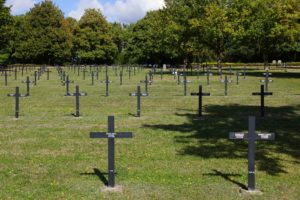
Along the way, we stopped in Consenvoye. Here is a German military cemetary, where more than 11,000 are buried, all from WW1. Well kept, and certainly respected, with a very different layout than cemetaries of France or Britain, each cross represents 4 soldiers.
